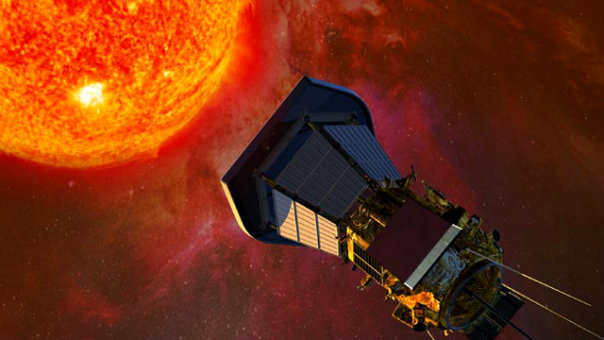 |
Solar Stellar X-ray Group
High Energy Astrophysics Division
Mail Stop 58
60 Garden Street
Cambridge, MA 02138
Office: 617-496-7875
Fax: 617-496-7577
Email: jkasper@cfa.harvard.edu
Dr. Kasper is an astrophysicist in the
Solar and Stellar X-Ray Group
in the
High Energy Astrophysics Division
of the
Harvard-Smithsonian Center for Astrophysics and a Lecturer in
the Department of Astronomy
at Harvard University.
He designs sensors for spacecraft that explore extreme environments in space from the surface of the Sun to the outer edges of the solar system. He is interested in understanding the forces that lead to solar flares and the solar wind, a stream of particles heated to millions of degrees in the Sun's atmosphere, or corona. His major results concern heating, instabilities, and helium in the solar corona and solar wind, and the impact of space weather on society. In 2007, he used measurements by the Voyager spacecraft to detect the termination shock, a massive shockwave surrounding our solar system. He has served on advisory committees for NASA, the National Science Foundation, and the National Academy of Sciences. He currently leads the SWEAP Investigation, an international team of scientists and engineers building sensors that will collect samples of the Sun for the NASA Solar Probe Plus spacecraft, a mission of exploration that will make history in 2018 as the first human-made object to plunge into the solar corona.
A pdf of his Curriculum Vitae is available
here. Use the links on the
left to access his
biography,
a detailed listing of publications,
recent news, and to learn about different
projects.
Current Projects
- Solar Wind Electrons Alphas And Protons (SWEAP) Investigation
on the Solar Probe Plus spacecraft,
Principal Investigator
Solar Probe Plus is the first
mission to our Sun. The SWEAP instruments
will sample the plasma in the solar atmosphere in
order to determine why it is so hot and how
the solar wind is accelerated to supersonic speeds. Launch in 2018.
Click here to go to the SWEAP web page.
- Solar Wind Experiment on the Wind Spacecraft, Faraday Cup
Instrument Lead
The Wind spacecraft is located at the
first Lagrangian Point (L1), a quasi-stable point about one
percent of the distance toward the Sun. From this L1 orbit
Wind is able to monitor solar wind conditions before
the plasma reached Earth, usually about an hour later.
- Deep Space Climate Observatory, Faraday Cup
Instrument Lead
The Deep Space Climate Observatory (DSCOVR) is a NOAA mission to the first
first Lagrangian Point (L1) with launched scheduled in late 2014 on a Falcon 9. DSCOVR includes a solar wind instrument suite that will be used to provide real-time warning of space weather before shocks reach Earth. The DSCOVR instrumnts will make the fastest ever measurments of solar wind plasma and magnetic fields ever recorded at L1.
- Cosmic Ray Telescope for the Effects of Radiation (CRaTER) instrument
on Lunar Reconnaissance Orbiter (LRO), Project Scientist,
Co-Investigator
The Principal Investigator of CRaTER is Prof. Harlan Spence
of the University of New Hampshire. LRO
launched in June 2009 and CRaTER continues to characterize the deep
space radiation environment in preparation for human travel to the moon
and beyond.
- Strofio instrument on the BepiColombo mission,
Institutional Lead, Co-Investigator
Strofio is a neutral
gas mass spectrometer being built to characterize the
exosphere of the planet Mercury. The Principal Investigator
of Strofio is Dr. Stefano Livi of the Southwest
Research Institute. Launch in 2014.
- Murchison Widefield Array,
Science Team Member
The Murchison Widefield Array (MWA) is a massive low frequency radio telescope operating in the Western Australian outback. MWA consists of 2,000 antennas spread over several square miles that record radio emission from 80-300 MHz.

| |
On the Radio: The Breathtaking Power And Beauty Of The Sun
The science, destruction, and beauty of the solar storm that's been blasting earth - from the breathtaking Aurora Borealis to future exploration of the sun itself. I was a guest for a one hour episode of WBUR talk show On Point with Tom Ashbrook. Stream the show and read background material on the Sun
here.
---
NASA Science News: Solar Wind Energy Source Discovered
NASA wrote a news story based on a recent paper we published in Physical Review Letters on heating of the solar corona and solar wind. Click
here for the NASA article.
| |





